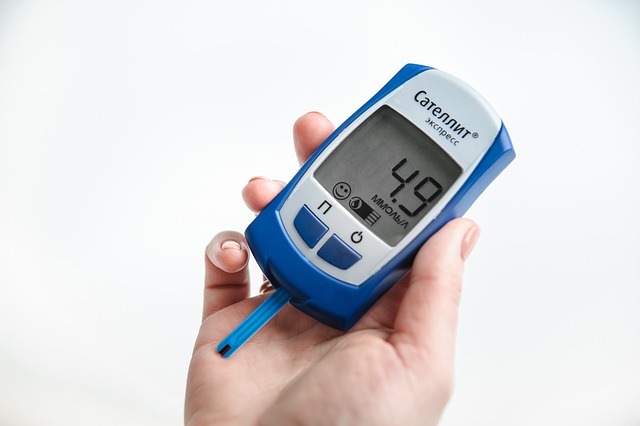A prediabetes diet is a core feature of most prediabetes treatment plans. The best prediabetes diet helps you lose extra pounds and provides nutritious foods that can help lower blood sugar and improve other diabetes risk factors. Your prediabetic diet may help you reverse prediabetes or delay the onset of type 2 diabetes according to the Centers for Disease Control and Prevention (CDC).
Here are the basics of a prediabetes diet. Fear not: it can be easy to follow and include great-tasting foods. You can also get support with your prediabetes diet and other treatment strategies when you join a Diabetes Prevention Program, which is specifically designed for prediabetes patients to lower risk of developing type 2 diabetes.
The goals for your 2020 prediabetes diet are to:
- Create a sustainable plan that you can use for the long term.
- Improve insulin sensitivity.
- Reduce blood sugar spikes and drops.
You can do it! Here is how.
Prediabetic Weight Loss Diet

Carrying around extra weight raises your risk of developing type 2 diabetes. Body fat, especially around your midsection, can be a factor in increased insulin resistance, which is what causes high blood sugar.
Consider these facts:
- Obese individuals have 7 times the risk of developing diabetes than normal weight individuals. [1]
- Each kg (2.2 lb.) of weight you lose lowers your risk for type 2 diabetes by 16%. [2]
- Losing 5 to 10% of your weight if you are obese lowers insulin resistance and blood sugar. [3] That is a range of 8 to 16 lb. if you weigh 160 lb.
That means that there is no need to commit to an overwhelming goal such as a 100-lb. weight loss. Your health and peace of mind will be far better off if you think in terms of realistic chunks. Each pound pays off.
Long-term, sustainable weight loss is the goal for your prediabetes diet. To that end, try:
- Plenty of high-fiber foods to keep you full. Consider vegetables, whole grains, legumes, and fruit.
- Plenty of protein, which is another filling nutrient. Select lean proteins, such as fish, egg whites, beans, and tofu.
- Plenty of water, which decreases hunger.b
- Smaller portions of high-calorie foods, and larger portions of vegetables.
- Keeping a food log, such as tracking with Lark DPP.
Healthy Prediabetes Diet Food Lists
Along with losing weight, eating the right foods can improve your blood sugar control. Fiber, [4] protein, and healthy fats stabilize blood sugar as they slow digestion and absorption of the foods you eat. Certain nutrients may reduce insulin resistance and help reverse prediabetes.
Your prediabetes diet targets other risk factors for diabetes. On the whole, the same eating patterns that can help lower blood sugar can have benefits such as lowering blood pressure, triglycerides, and "bad" LDL cholesterol, which are risk factors for heart disease and hypertension.
Prediabetes Diet Food List [5]
Avoiding other foods can also help control prediabetes. Sugar and refined starches can spike your blood glucose (that is bad!), but it is not just about the carbs. Unhealthy fats, [6] processed meats, [7] and even sodium from salty foods [8] can increase insulin resistance.
Prediabetes Diet Foods to Avoid List

Carbohydrates and Your Prediabetes Diet
With all the talk about carbs and blood sugar, what should you do about carbohydrates when planning your prediabetes diet? Are all carbs bad? Should you go for a low-carb or even a very low-carb ketogenic diet? The best approach is one that include healthy carbs and is comfortable for you to follow.
Smart Carb Tips
Do you remember the fat-free diet fad from a few decades ago? The theory was that all fats are bad, but it turns out that some fats are bad, and some are good. Similarly, all carbohydrates are not created equal, and Lark supports a healthy carb approach. Here are some guidelines.
- Choose good carbohydrates. Look for high-fiber sources, such as vegetables, fruit, and whole grains, and high-protein sources, such as dairy products. Beans and nuts have both protein and fiber.
- Limit bad carbohydrates. Keep an eye out for added sugars and refined starches.
- Watch your portion sizes. Aim for 15 to 45 grams of carbohydrates per meal. There are 15 grams in a slice of bread, a 1/2 cup of cooked beans, pasta, grains, and starchy vegetables, or a small serving of fruit.
Glycemic Index and Prediabetes
A glycemic index diet for prediabetes can help lower blood sugar. The glycemic index is a measure of how fast and how much eating a certain food with carbohydrates makes your blood sugar levels rise. Only foods with carbohydrates have a glycemic index. A higher glycemic index diet is usually less healthy for prediabetes.
Foods that have a lower glycemic index tend to be higher in fiber, protein, and/or fat. Foods with a lower glycemic index tend to be higher in sugars and/or refined starches. Cooking and other forms of processing raise the glycemic index. You can find a glycemic foods list here.
Sample Prediabetes Menus
Day 1
Day 2
Day 3
Diabetes Prevention Program for Diet Support
A prediabetes diet is easier to follow when you have support. A digital Diabetes Prevention Program such as Lark can help you stick to your prediabetes diet and the rest of your healthy lifestyle changes.
The DPP has a curriculum that is approved by the Centers for Disease Control and Prevention and is designed to take up to a year to complete. In that time, you can learn about weight loss, healthy eating, and physical activity to prevent or delay type 2 diabetes. Lesson content includes strategies for overcoming barriers such as lack of time, losing motivation, and eating at restaurants.
With Lark DPP on your smartphone, you can:
- Chat 24/7 with your health coach.
- Track your weight loss, and log your food and physical activity.
- Get personalized feedback on what you eat and your activity.
- Pull your health coach out of your pocket whenever you want to chat.
You may be eligible to get Lark DPP and get started on your prediabetes diet and health goals. Find out today!
Reference
1.https://www.academia.edu/3268857/The_magnitude_of_association_between_overweight_and_obesity_and_the_risk_of_diabetes_a_meta-analysis_of_prospective_cohort_studies
2. https://care.diabetesjournals.org/content/29/9/2102
3. https://care.diabetesjournals.org/content/34/6/1424
4. https://www.mdpi.com/2072-6643/10/7/943
5. https://www.diabetes.org/food-and-fitness/food/what-can-i-eat/making-healthy-food-choices/diabetes-superfoods.html
6. https://www.ncbi.nlm.nih.gov/pmc/articles/pmid/26354543/
7. https://www.ncbi.nlm.nih.gov/pubmed/29571924
8. https://www.ncbi.nlm.nih.gov/pubmed/23594269












.webp)






